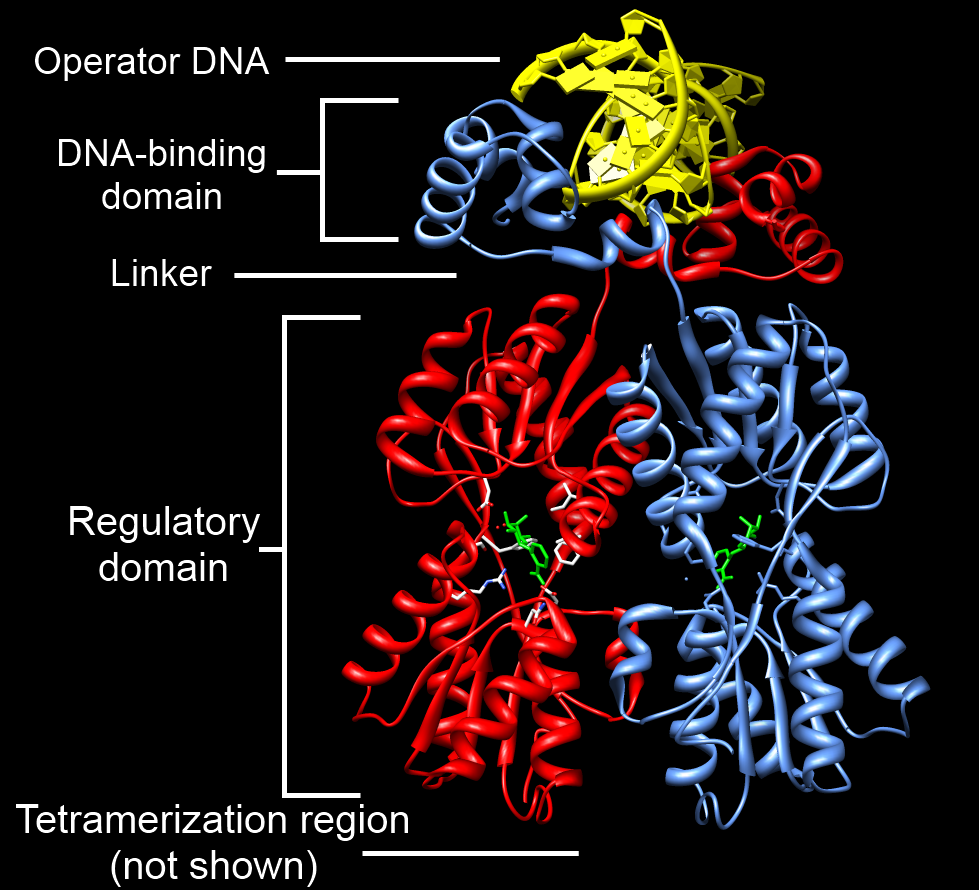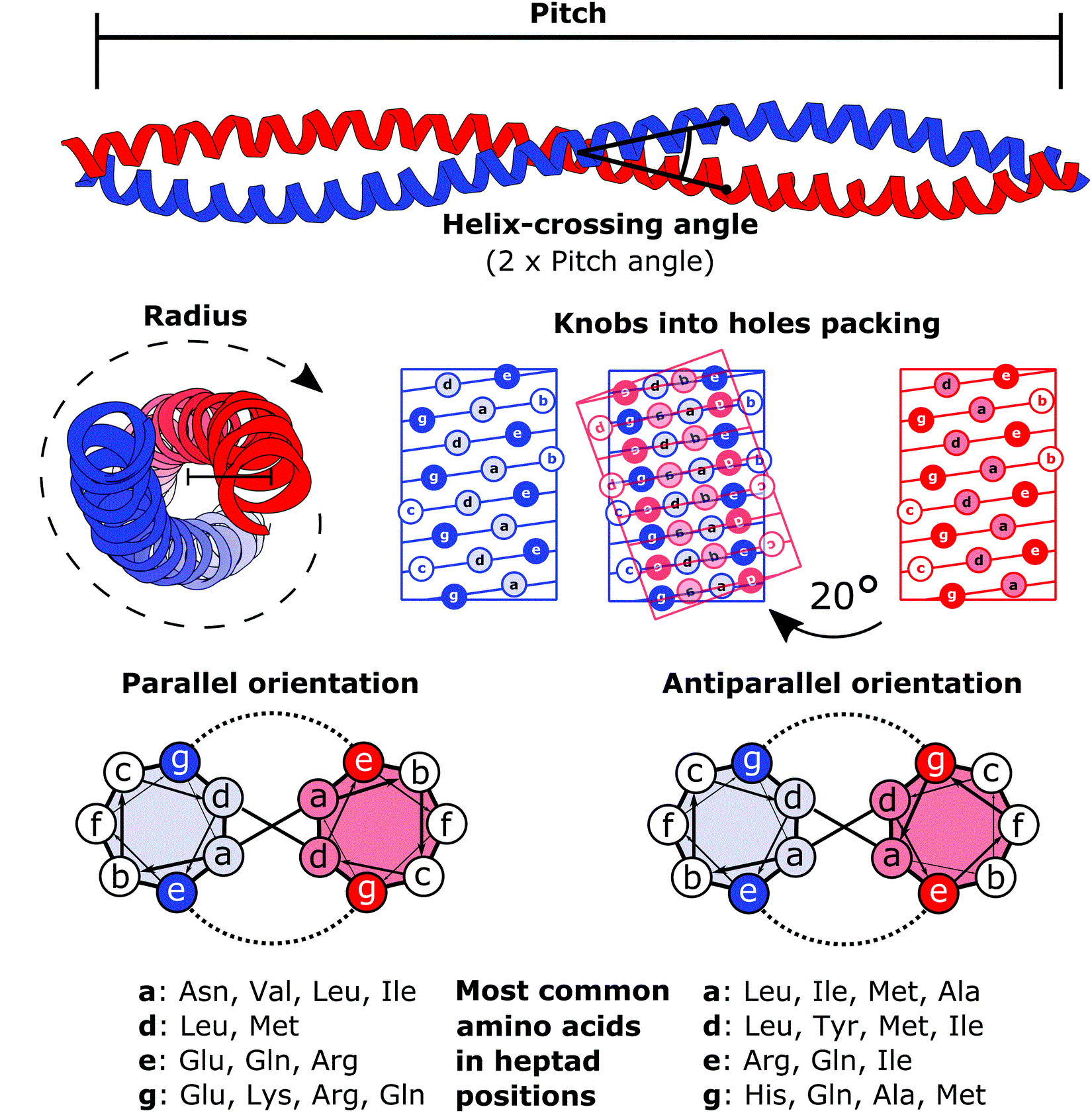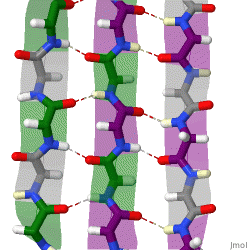|
JAK-STAT Signaling Pathway
The JAK-STAT signaling pathway is a chain of interactions between proteins in a cell, and is involved in processes such as immunity, cell division, cell death, and tumor formation. The pathway communicates information from chemical signals outside of a cell to the cell nucleus, resulting in the activation of genes through the process of transcription. There are three key parts of JAK-STAT signalling: Janus kinases (JAKs), signal transducer and activator of transcription proteins (STATs), and receptors (which bind the chemical signals). Disrupted JAK-STAT signalling may lead to a variety of diseases, such as skin conditions, cancers, and disorders affecting the immune system. Structure of JAKs and STATs ''Main articles: JAKs and STATs'' There are four JAK proteins: JAK1, JAK2, JAK3 and TYK2. JAKs contains a FERM domain (approximately 400 residues), an SH2-related domain (approximately 100 residues), a kinase domain (approximately 250 residues) and a pseudokinase domai ... [...More Info...] [...Related Items...] OR: [Wikipedia] [Google] [Baidu] |
Immunity (medical)
In biology, immunity is the state of being insusceptible or resistant to a noxious agent or process, especially a pathogen or infectious disease. Immunity may occur naturally or be produced by prior exposure or immunization. Innate and adaptive The immune system has Innate immune system, innate and Adaptive immune system, adaptive components. Innate immunity is present in all metazoans, immune responses: inflammation, inflammatory responses and phagocytosis. The adaptive component, on the other hand, involves more advanced lymphocyte, lymphatic cells that can distinguish between specific "non-self" substances in the presence of "self". The reaction to foreign substances is etymologically described as inflammation while the non-reaction to self substances is described as immunity. The two components of the immune system create a dynamic biological environment where "health" can be seen as a physical state where the self is immunologically spared, and what is foreign is inflammat ... [...More Info...] [...Related Items...] OR: [Wikipedia] [Google] [Baidu] |
STAT1
Signal transducer and activator of transcription 1 (STAT1) is a transcription factor which in humans is encoded by the ''STAT1'' gene. It is a member of the STAT protein family. Function All STAT molecules are phosphorylated by receptor associated kinases, that causes activation, dimerization by forming homo- or heterodimers and finally translocate to nucleus to work as transcription factors. Specifically STAT1 can be activated by several ligands such as Interferon alpha (IFNα), Interferon gamma (IFNγ), Epidermal Growth Factor (EGF), Platelet Derived Growth Factor (PDGF), Interleukin 6 (IL-6), or IL-27. Type I interferons (IFN-α, IFN-ß) bind to receptors, cause signaling via kinases, phosphorylate and activate the Jak kinases TYK2 and JAK1 and also STAT1 and STAT2. STAT molecules form dimers and bind to ISGF3G/IRF-9, which is Interferon stimulated gene factor 3 complex with Interferon regulatory Factor 9. This allows STAT1 to enter the nucleus. STAT1 has a key role in many ... [...More Info...] [...Related Items...] OR: [Wikipedia] [Google] [Baidu] |
DNA-binding Domain
A DNA-binding domain (DBD) is an independently folded protein domain that contains at least one structural motif that recognizes double- or single-stranded DNA. A DBD can recognize a specific DNA sequence (a recognition sequence) or have a general affinity to DNA. Some DNA-binding domains may also include nucleic acids in their folded structure. Function One or more DNA-binding domains are often part of a larger protein consisting of further protein domains with differing function. The extra domains often regulate the activity of the DNA-binding domain. The function of DNA binding is either structural or involves transcription regulation, with the two roles sometimes overlapping. DNA-binding domains with functions involving DNA structure have biological roles in DNA replication, repair, storage, and modification, such as methylation. Many proteins involved in the regulation of gene expression contain DNA-binding domains. For example, proteins that regulate transcription ... [...More Info...] [...Related Items...] OR: [Wikipedia] [Google] [Baidu] |
Coiled Coil
A coiled coil is a structural motif in proteins in which two to seven alpha-helices are coiled together like the strands of a rope. ( Dimers and trimers are the most common types.) They have been found in roughly 5-10% of proteins and have a variety of functions. They are one of the most widespread motifs found in protein-protein interactions. To aid protein study, several tools have been developed to predict coiled-coils in protein structures. Many coiled coil-type proteins are involved in important biological functions, such as the regulation of gene expression — e.g., transcription factors. Notable examples are the oncoproteins c-Fos and c-Jun, as well as the muscle protein tropomyosin. Discovery The possibility of coiled coils for α-keratin was initially somewhat controversial. Linus Pauling and Francis Crick independently came to the conclusion that this was possible at about the same time. In the summer of 1952, Pauling visited the laboratory in England where C ... [...More Info...] [...Related Items...] OR: [Wikipedia] [Google] [Baidu] |
C-terminus
The C-terminus (also known as the carboxyl-terminus, carboxy-terminus, C-terminal tail, carboxy tail, C-terminal end, or COOH-terminus) is the end of an amino acid chain (protein Proteins are large biomolecules and macromolecules that comprise one or more long chains of amino acid residue (biochemistry), residues. Proteins perform a vast array of functions within organisms, including Enzyme catalysis, catalysing metab ... or polypeptide), terminated by a free carboxyl group (-COOH). When the protein is translated from messenger RNA, it is created from N-terminus to C-terminus. The convention for writing peptide sequences is to put the C-terminal end on the right and write the sequence from N- to C-terminus. Chemistry Each amino acid has a carboxyl group and an amine group. Amino acids link to one another to form a chain by a dehydration reaction which joins the amine group of one amino acid to the carboxyl group of the next. Thus polypeptide chains have an end with an ... [...More Info...] [...Related Items...] OR: [Wikipedia] [Google] [Baidu] |
Transactivation Domain
The transactivation domain or trans-activating domain (TAD) is a transcription factor scaffold domain which contains binding sites for other proteins such as transcription coregulators. These binding sites are frequently referred to as activation functions (AFs). TADs are named after their amino acid composition. These amino acids are either essential for the activity or simply the most abundant in the TAD. Transactivation by the Gal4 transcription factor is mediated by acidic amino acids, whereas hydrophobic residues in Gcn4 play a similar role. Hence, the TADs in Gal4 and Gcn4 are referred to as acidic or hydrophobic, respectively. In general we can distinguish four classes of TADs: * acidic domains (called also “acid blobs” or “negative noodles", rich in D and E amino acids, present in Gal4, Gcn4 and VP16). * glutamine-rich domains (contains multiple repetitions like "QQQXXXQQQ", present in SP1) * proline-rich domains (contains repetitions like "PPPXXXPPP" present i ... [...More Info...] [...Related Items...] OR: [Wikipedia] [Google] [Baidu] |
Beta Sheet
The beta sheet (β-sheet, also β-pleated sheet) is a common motif of the regular protein secondary structure. Beta sheets consist of beta strands (β-strands) connected laterally by at least two or three backbone hydrogen bonds, forming a generally twisted, pleated sheet. A β-strand is a stretch of polypeptide chain typically 3 to 10 amino acids long with backbone in an extended conformation. The supramolecular association of β-sheets has been implicated in the formation of the fibrils and protein aggregates observed in amyloidosis, Alzheimer's disease and other proteinopathies. History The first β-sheet structure was proposed by William Astbury in the 1930s. He proposed the idea of hydrogen bonding between the peptide bonds of parallel or antiparallel extended β-strands. However, Astbury did not have the necessary data on the bond geometry of the amino acids in order to build accurate models, especially since he did not then know that the peptide bond was planar. ... [...More Info...] [...Related Items...] OR: [Wikipedia] [Google] [Baidu] |
Alpha Helix
An alpha helix (or α-helix) is a sequence of amino acids in a protein that are twisted into a coil (a helix). The alpha helix is the most common structural arrangement in the Protein secondary structure, secondary structure of proteins. It is also the most extreme type of local structure, and it is the local structure that is most easily predicted from a sequence of amino acids. The alpha helix has a right-handed helix conformation in which every backbone amino, N−H group hydrogen bonds to the backbone carbonyl, C=O group of the amino acid that is four residue (biochemistry), residues earlier in the protein sequence. Other names The alpha helix is also commonly called a: * Pauling–Corey–Branson α-helix (from the names of three scientists who described its structure) * 3.613-helix because there are 3.6 amino acids in one ring, with 13 atoms being involved in the ring formed by the hydrogen bond (starting with amidic hydrogen and ending with carbonyl oxygen) Discovery ... [...More Info...] [...Related Items...] OR: [Wikipedia] [Google] [Baidu] |
SH2 Domain
The SH2 (Src Homology 2) domain is a structurally conserved protein domain contained within the Src oncoprotein and in many other intracellular signal-transducing proteins. SH2 domains bind to phosphorylated tyrosine residues on other proteins, modifying the function or activity of the SH2-containing protein. The SH2 domain may be considered the prototypical modular protein-protein interaction domain, allowing the transmission of signals controlling a variety of cellular functions. SH2 domains are especially common in adaptor proteins that aid in the signal transduction of receptor tyrosine kinase pathways. Structure and interactions SH2 domains contain about 100 amino acid residues and exhibit a central antiparallel β-sheet centered between two α-helices. Binding to phosphotyrosine-containing peptides involves a strictly-conserved Arg residue that pairs with the negatively-charged phosphate on the phosphotyrosine, and a surrounding pocket that recognizes flanking seque ... [...More Info...] [...Related Items...] OR: [Wikipedia] [Google] [Baidu] |
STAT6
Signal transducer and activator of transcription 6 (STAT6) is a transcription factor that belongs to the Signal Transducer and Activator of Transcription (STAT) family of proteins. The proteins of STAT family transmit signals from a receptor complex to the nucleus and activate gene expression. Similarly as other STAT family proteins, STAT6 is also activated by growth factors and cytokines. STAT6 is mainly activated by cytokines interleukin-4 and interleukin-13. Molecular biology In the human genome, STAT6 protein is encoded by the STAT6 gene, located on the chromosome 12q13.3-q14.1. The gene encompasses over 19 kb and consists of 23 exons. STAT6 shares structural similarity with the other STAT proteins and is composed of the N-terminal domain, DNA binding domain, SH3- like domain, SH2 domain and transactivation domain (TAD). STAT proteins are activated by the Janus family (JAKs) tyrosine kinases in response to cytokine exposure. STAT6 is activated by cytokines in ... [...More Info...] [...Related Items...] OR: [Wikipedia] [Google] [Baidu] |
STAT5B
Signal transducer and activator of transcription 5B is a protein that in humans is encoded by the ''STAT5B'' gene. ''STAT5B'' orthologs have been identified in most placentals for which complete genome data are available. Function The protein encoded by this gene is a member of the STAT family of transcription factors. In response to cytokines and growth factors, STAT family members are phosphorylated by the receptor associated kinases, and then form homo- or heterodimers that translocate to the cell nucleus where they act as transcription activators. This protein mediates the signal transduction triggered by various cell ligands, such as IL2, IL4, CSF1, and different growth hormones. It has been shown to be involved in diverse biological processes, such as TCR signaling, apoptosis, adult mammary gland development, and sexual dimorphism of liver gene expression. This gene was found to fuse to retinoic acid receptor-alpha (''RARA'') gene in a small subset of acute promyelocy ... [...More Info...] [...Related Items...] OR: [Wikipedia] [Google] [Baidu] |
STAT5A
Signal transducer and activator of transcription 5A is a protein that in humans is encoded by the ''STAT5A'' gene. ''STAT5A'' orthologs have been identified in several placentals for which complete genome data are available. Structure STAT5a shares the same six functional domains as the other members of the STAT family. It contains 20 amino acids unique to its C-terminal domain and is 96% similar to its homolog, STAT5b. The six functional domains and their corresponding amino acid positions are as follows: * N-Terminal domain (aa1-144): stabilized interactions to form tetramers * Coiled-coil domain (aa145-330): interacts with chaperones and facilitates protein-protein interactions for transcriptional regulation * DNA binding domain (aa331-496): permits binding to consensus gamma-interferon activation sequence (GAS) * Linker domain (aa497-592): stabilizes DNA binding * Src Homology 2 domain (aa593-685): mediates receptor-specific recruitment and STAT dimerization via phosphor ... [...More Info...] [...Related Items...] OR: [Wikipedia] [Google] [Baidu] |





